About MaRefine
The technological key that enables what is today considered residual streams or waste to be converted into high value products is the biorefinery. In MaRefine, we will evaluate the processing potential of residual streams from
- fish; salmon, herring and whitefish (cod, pollock, haddock etc.)
- shrimp
- algae; sea lettuce (green algae), red dulse (red algae), sugar kelp (brown algae) and diatoms (microalgae).
The benefits of a blue biorefinery will be maximized – both from a sustainability and economic perspective – by utilizing the entire biomass and extracting as many valuable components as possible to create high-value end products.
In MAREFINE, an experienced team of researchers together with actors along the value chain from side stream generation to end product use, will create a basis for a blue biorefinery. The project will also focus on identifying and removing obstacles and developing a business plan for the establishment of a blue biorefinery.
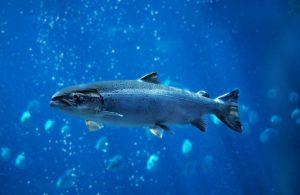
Salmon
Salmo salar, predominantly sourced from aquaculture, is a fatty fish appreciated for its omega-3 content and nice pigmentation. Its side streams, like frame, heads, trimmings, and skin, are rich in high-value components such as proteins, oils, and collagen, suitable for biorefinery and nutraceutical applications.
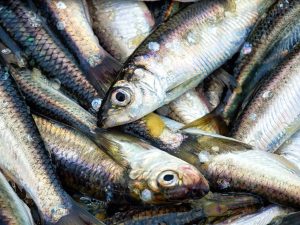
Herring
Clupea harengus, a small oily fish typically caught in the wild, is known for its high-fat content and omega-3-rich profile. The side streams, including skin, bones, and heats and tails, offer a source of fish oil and proteins, with potential for collagen extraction but requiring processing to address strong odors.
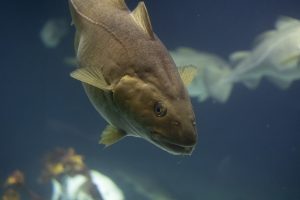
White fish
White fish, such as cod and haddock, are lean species commonly used in food production, recognized by high protein and low fat content. Their side streams, including head, skin and frames, are abundant in collagen and serve as valuable raw materials for biorefinery cascading and especially marine collagen production.
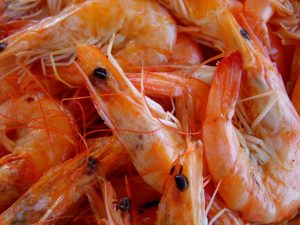
Shrimp
Pandalus borealis. The main residual stream from crustacean seafood is the shell. The shrimp is no exception where the shell constitutes 60 % of the shrimp’s total weight of which the valuable component chitin in turn constitutes 30%. In addition to chitin, the shell contains calcium carbonate, bioactive peptides, lipids and the valuable red pigment astaxanthin.

Sea lettuce
Ulva fenestrata is a bright green, leafy algae prized for its high nutrient content, including vitamins, proteins (5-25%) and the highly sulphated and bioactive polysaccharide ulvan. Sea lettuce has by tradition been very popular as food worldwide but is gaining attention for MedTech and pharmaceutical applications.

Sugar kelp
Saccharina latissima is a brown algae that is rich in vitamins, minerals, phenolics such as phlorotannins, and pigments such as fucoxanthin. It also contains a range of carbohydrates including alginate as well as laminarin and bioactive fucoidans, making sugar kelp a valuable resource for food, health and sustainable materials.
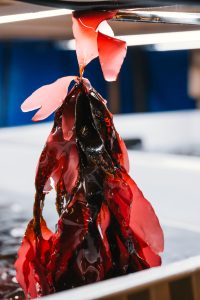
Red dulce
Palmaria palmata is a red algae with a soft, chewy texture and a distinctive umami flavor. It is valued for its relatively high protein (10-35%) and high carbohydrate content – including xylans and to a lesser extent cellulose, floridoside and floridean starch – and use in culinary dishes and health products.

Diatoms
Diatoms is a group of microalgae that evolved ca 200 million years ago. Today they are grown commercially in Kungshamn for their silica cell wall. In addition, the biomass is rich in various valuable components, including fatty acids and pigments such as fucoxanthin
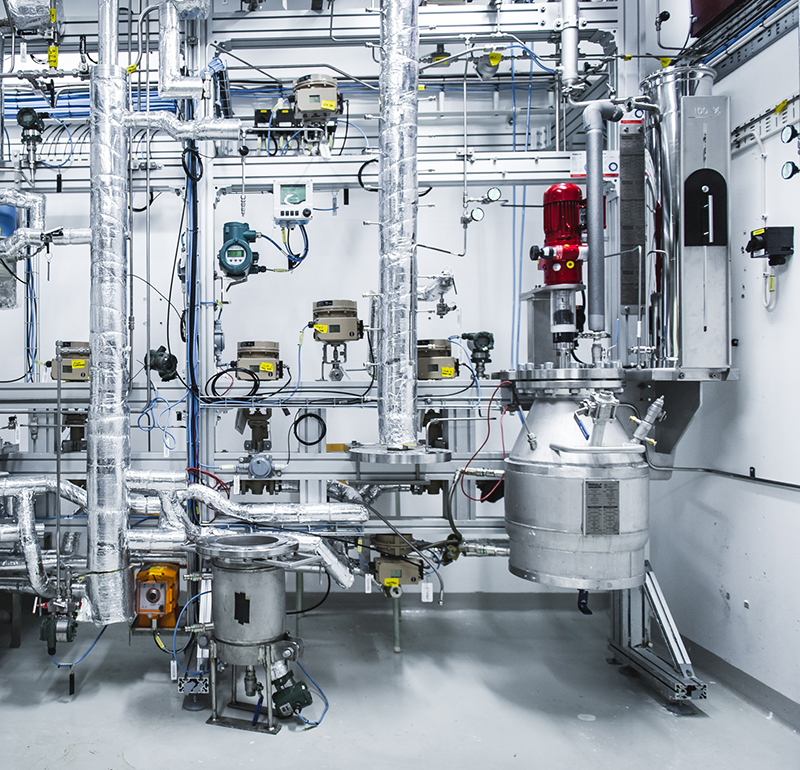
Biorefinery
In MaRefine, cutting edge research on biomass fractionation and characterization – developed at Chalmers University of Technology (Gothenburg) in the research groups of Professor Ingrid Undeland and Assoc. Professor Mehdi Abdollahi is combined with Chalmers pilot facilities and the industrial large scale biorefinery infrastructure available at RISE Processum in Örnsköldsvik. We are developing mild cascading processes which are designed to preserve and recover as many as possible of the valuable components found within the biomasses targeted in MaRefine. The process optimisation in terms of yield and purity is balanced by a continuous assessment of the environmental and economic impact as well as the valorisation potential of the fractions.
Scaling up the most promising biorefinery processes is an important part of MaRefine to show real industrial relevance and economic feasibility. We have already exemplified this potential in a smaller preproject to MaRefine by sustainably extracting chitin from shrimp shells followed by wet-spinning of this valuable but underutilised carbohydrate into textile fibres.
Valorisation

MedTech
MedTech products are characterized by a high value per volume. In MaRefine, we are focusing on materials for advanced wound care and regenerative medicine where bioactive carbohydrates (fucoidans, ulvans) and proteins (marine collagen) are of interest.

Personal care
Personal care and cosmetics are segments where there is a strong consumer push for more sustainable solutions. Many of the components such as bioactive oils, antioxidants. A noteworthy success story that is part of MaRefine is Swedish Algae Factory that has commercialized the mesoporous silica cell wall of diatoms for skin care.

Textiles
The textile industry is a responsible for 10% of the global carbon emissions which is more than international flights and maritime shipping combined. There is large need for new renewable feedstocks, where marine side streams can play an important role. The alginate textile fibre development has already reached high trl levels but there is a large untapped potential for chitin.

Food and nutraceuticals
Creating more food from less harvested fish is very important for both profit and sustainability. The side streams are usually still rich in a lot of nutrients such a s proteins, oils, vitamins, and dietary fibres. A success story connected to MaRefine is Aquafood that has commercialized biorefined fish side streams for food.
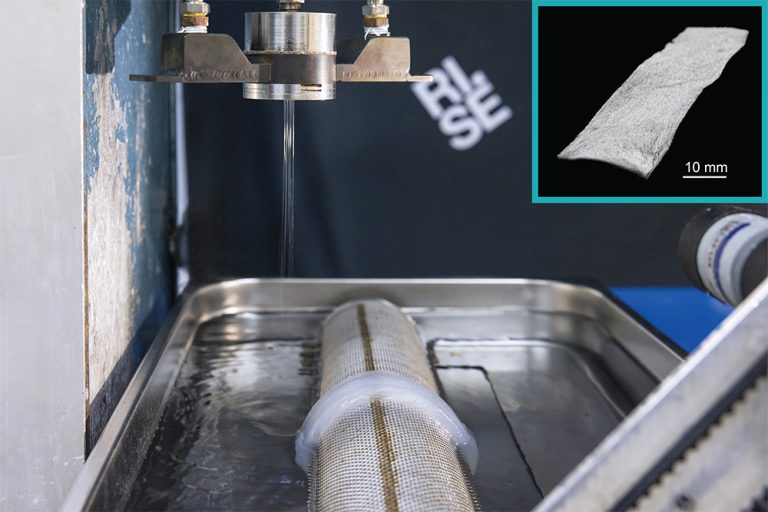
For the biorefinery to be profitable, and for the seafood companies to generate revenue on their side streams, it is important that the valorisation is aimed towards high value products. MaRefine is therefore focusing on products belonging to the MedTech, personal care and cosmetics, food and nutraceutical, and textile segment.
For food and nutraceuticals, we implement extrusion processes and advanced emulsification technologies available at RISE and Chalmers for the formulation/encapsulation of proteins or lipid-rich fractions. Regarding MedTech, personal care and textiles, our valorisation concerns material development based on biorefined macromolecules (polysaccharides and proteins) using state of the art fibre formation technologies and 3D bioprinting. At RISE in Mölndal (south of Gothenburg), we take advantage of our unique equipment park that encompasses the entire value chain from fibre formation to woven textiles or nonwovens in lab to pilot and demo scales.
Sustainability and techno-economic assessment
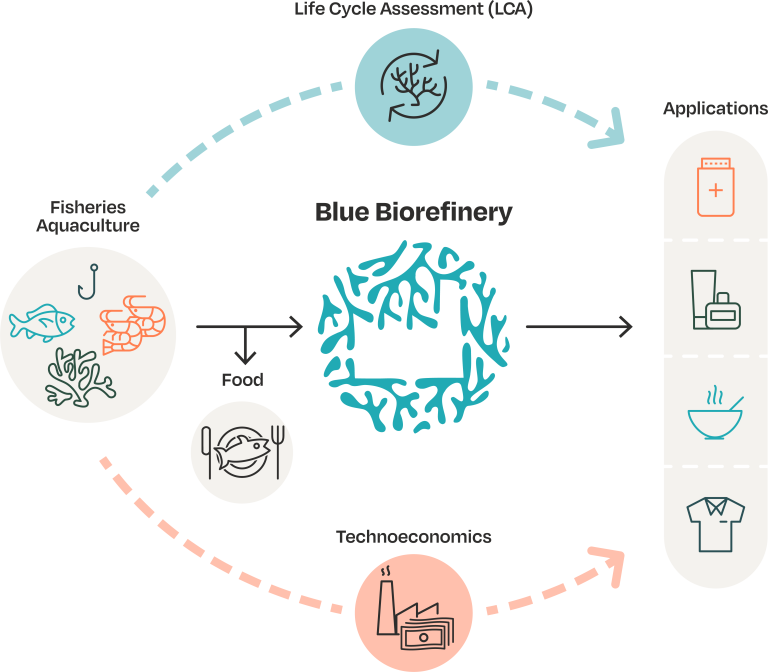
The biorefinery process and valorisation – from raw material (side stream) via the refinery process to final product – is assessed in terms of sustainability and techno-economic analysis in an iterative manner. This methodology was developed in the preproject to MaRefine as a means to guide the biorefinery process development towards the economically most feasible process with the lowest carbon footprint.
The sustainability of the biorefinery process and valorisation is assessed using Life Cycle Assessment (LCA), which is a method to evaluate the environmental impact associated with the different stages of a product’s life cycle. This approach allows for the comparison of different process scenarios and helps pinpoint stages in the biorefinery process that could have significant environmental impact. In parallel, the tecno-economic assessment is used to identify the costliest process parameters for up-scaling using process and simulation tools as well as Monte Carlo simulations.

Paving the way for a blue biorefinery
However, demonstrating the range of high value products that can be created from these marine side streams is not enough. For the actual establishment of a blue biorefinery on the Swedish coast, there are many additional hurdles to overcome including legislation and regulations (permits, biomass classification), logistics (geographical location of the generated biomass, shelf life of the biomass), infrastructure, business and ownership models.
In MaRefine, we therefore connect actors from the public and private sector in new value chains. Not only the seafood industry and companies belonging to the various high value product segments but also costal municipalities and waste management. Our vision is that in the future, the marine side streams will not be seen as waste, but rather as a precious renewable feedstock for sustainable high value products.